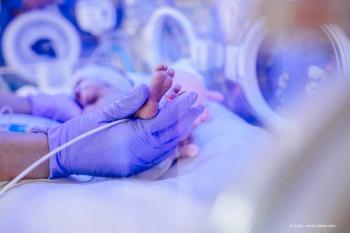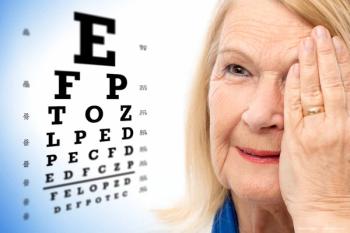
Seeing the reality of artificial vision
Ophthalmology may be one step closer to the hope of providing artificial vision for individuals affected by virtually all forms of blindness.
Reviewed by Nader Pouratian, MD
Ophthalmology may be one step closer to the hope of providing artificial vision for individuals affected by virtually all forms of blindness.
Second Sight Medical Products, manufacturer of the only retinal prosthesis approved by the FDA (Argus II Retinal Prosthesis System), has begun the clinical testing phase of its program to develop a visual cortical prosthesis.
Named Orion I, the system uses an electrode array implanted on the surface of the brain over the visual cortex.
The first patient in a study investigating the safety and feasibility of the approach was operated on in October 2016.
The procedure involved implantation of an off-the-shelf, 8-electrode neurostimulator in a 30-year-old woman with blindness secondary to a rare autoimmune disease.
The surgery was performed safely and successfully by neurosurgeon Nader Pouratian, MD, assistant professor of neurosurgery, University of California, Los Angeles. Postoperatively, the patient is doing well, has had no adverse effects, and reports seeing spots of light in response to electrode stimulation.
“There is a history in neurosurgery of using brain stimulators to treat various neurological diseases, such as Parkinson’s disease,” Dr. Pouratian said. “Accordingly, there has been a lot of interest in using brain stimulation to treat other disorders, including depression and chronic pain. This effort to try to restore vision through brain stimulation is a relatively unique focus.
“Although the initial procedure did not involve implantation of the Orion I, it is the first modern era demonstration of eliciting phosphenes after placing a fully implantable device onto the surface of the brain,” Dr. Pouratian added. “The outcomes provide us with a reasonable expectation of achieving success with the Orion I.”
“The positive experience in this first patient confirmed that we are on the right track for developing a visual cortical prosthesis,” said Robert Greenberg, MD, PhD, president and chief executive officer of Second Sight. “Now, we will continue to follow this patient while working to refine the technology and software as we look forward to beginning evaluation of the Orion I platform in a clinical trial.”
Platform rationale
Argus II is approved for use in certain patients with severe to profound retinitis pigmentosa, and it is currently being investigated in patients with age-related macular degeneration. However, Argus II and other retinal prostheses require the presence of some functioning retinal neurons and a relatively intact optic nerve.
“An estimated 6 million people who are blind, including people affected by glaucoma, diabetic retinopathy, or optic nerve damage caused by trauma or infection, cannot be helped by a retinal prosthesis,” Dr. Greenberg said.
“The Orion I applies the concepts and techniques developed at Second Sight for our retinal prosthesis while providing the downstream stimulation needed for achieving vision in patients who have more proximal damage in the visual system,” he said. “More than 40 years ago, Brindley and Dobelle were working to develop a visual cortical prosthesis, but they were unable to create a practical device because they did not have access to the robust wireless technology that we have today.”
Device description
Orion I is similar in many respects to the Argus II Retinal Prosthesis System. Like Argus II, Orion I uses a two-dimensional 60-electrode array and a videocamera fit onto glasses to receive visual input that is converted to a stimulation pattern by an externally-worn video processor.
The processor transmits the data and power wirelessly to an implanted generator and the electrode array.
However, Orion I incorporates physical modifications to the array and the changes to software for its computer chip to account for differences between the retinal and brain neural interfaces.
Familiar surgery
Orion I, like Argus II, is also expected to involve a relatively short implantation procedure. The surgery involves making a small opening on the back of the skull over the occipital lobe in order to gain access to the subdural space for placement of the electrode array over the primary visual cortex. Preoperative MRI mapping is performed to guide the implantation.
“Everyone’s brain is different in shape and size, and the electrode array needs to lie directly over the visual cortex on the medial aspect of the brain,” Dr. Pouratian explained.
“Preoperative MRI allows us to identify the best place to enter the skull and ensure that the array is placed on the optimal location over the visual cortex to restore vision,” he added.
The electrode array is tunneled through the subdural space and held in place through apposition of the brain and the falx without needing any accessory for fixation. The surgery also involves implanting the generator into the skull.
“We have adapted existing neurosurgical approaches so that the technique will be within the skillset of most neurosurgeons,” Dr. Pouratian said. “One of the key aspects in developing the Orion I was to develop a device that would be both easily adoptable from a surgical perspective while achieving practical outcomes for patients so that they would gain some useful form of vision.”
As with Argus II, there will be a postoperative fitting step for customizing the exact amount of current on each electrode.
However, because the brain is not as smooth as the retina, an additional mapping step is needed.
“Representation of the visual world on the brain is much more complicated compared to mapping of the retina,” Dr. Pouratian said.
“While the brain mapping presents a significant challenge, Second Sight has been performing studies in preparation for the Orion I clinical trial,” he added. “The company is in a good position to complete the needed psychophysical testing because the Orion I has adequate resolution, sufficient power, and the flexibility to stimulate with complex patterns.”
The surgery to place the off-the-shelf neurostimulator was performed after Second Sight completed its preclinical testing program to establish the safety of implanting and stimulating the Orion I. The company is preparing to submit its IDE application to the FDA in order to gain approval to begin the Orion I clinical trial this year.
“The original plan was to enroll more than one subject into the initial study using the off-the-shelf neurostimulator,” Dr. Pouratian said. “Rather, however, based on the very positive outcomes and what we have learned from this first patient, we feel justified going forward directly with the Orion I feasibility study under FDA supervision.”
Nader Pouratian, MD
E:npouratian@mednet.ucla.edu
Dr. Pouratian is a consultant to Second Sight, and the feasibility study was done through a grant provided by Second Sight to the University of California, Los Angeles.
Newsletter
Keep your retina practice on the forefront—subscribe for expert analysis and emerging trends in retinal disease management.















































